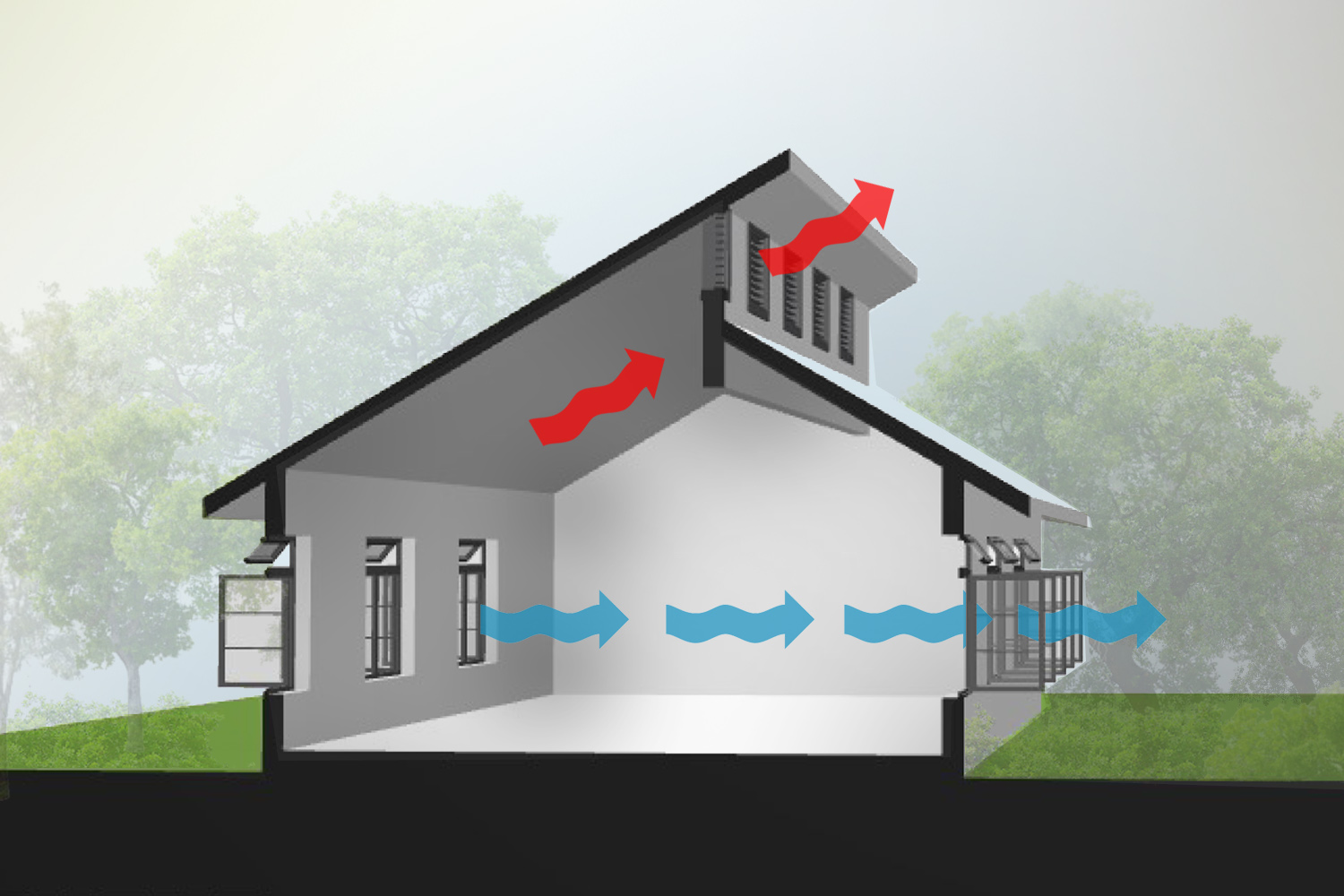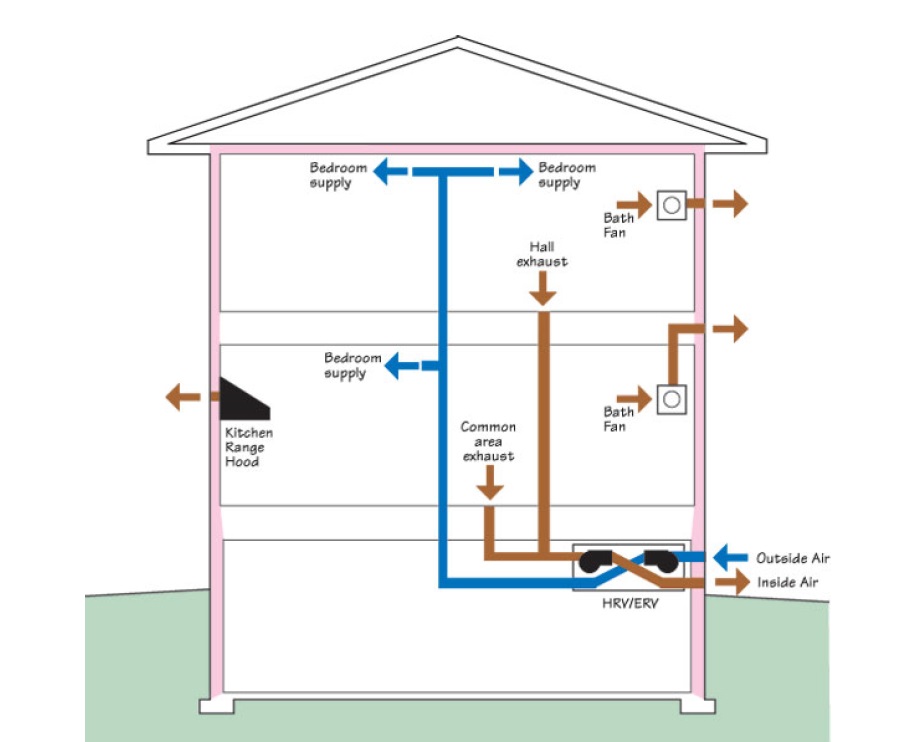Understanding the Value of Home Ventilation for a Healthier Living Setting
Home air flow plays an essential duty in preserving a healthy living atmosphere. It helps with the exchange of interior and outdoor air, which is very important for improving air top quality. Without proper air flow, homes can end up being breeding grounds for irritants and pollutants. The repercussions of poor air circulation can be significant. This brings up the inquiry of exactly how house owners can successfully carry out ventilation techniques to secure their health and wellness and wellness. Understanding these methods is imperative.

The Essentials of Home Ventilation
Home ventilation serves as a crucial component of indoor air top quality and convenience. It entails the procedure of trading stagnant indoor air with fresh outside air, consequently lowering humidity and controlling temperature. Proper air flow systems can consist of all-natural methods, such as open windows and vents, in addition to mechanical systems, such as exhaust followers and air exchangers. Efficient home air flow assists stop problems like interior mold and mildew growth and the accumulation of dangerous fragments. It likewise enhances total power effectiveness, as well-ventilated spaces can maintain comfy temperatures with less dependence on heating and cooling systems. Recognizing the essentials of home air flow is important for property owners looking for to produce a healthier living setting on their own and their family members.

Usual Resources of Indoor Air Contamination

Several might not understand it, indoor air pollution can originate from different resources within a house. Common factors consist of unstable organic substances (VOCs) given off from paints, solvents, and cleaning items. House devices, such as gas ranges and fireplaces, can launch dangerous gases like carbon monoxide gas and nitrogen dioxide. Furthermore, mold and mildew thrive in wet locations, launching spores that influence air high quality. Pet dog dander, allergen, and pollen can accumulate inside your home, further aggravating pollution degrees. Cigarette smoking inside your home generates poisonous chemicals that remain in the air. Ultimately, developing materials, consisting of asbestos and formaldehyde, can off-gas unsafe materials. Identifying these sources is crucial for maintaining a much healthier indoor setting and promoting effective air flow strategies.
Health Effects of Poor Ventilation
Indoor air contamination can have substantial wellness effects, specifically when air flow is inadequate. Poor ventilation can bring about the accumulation of damaging toxins, such as unstable natural compounds, mold and mildew, and particle matter. This accumulation might result in breathing concerns, consisting of asthma, allergic reactions, and persistent obstructive lung condition. People may experience symptoms like migraines, fatigue, and irritation of the eyes, nose, and throat. Prone populaces, such as children and the elderly, go to higher threat for severe health impacts. Long-lasting direct exposure to badly ventilated environments can additionally contribute to much more significant problems, consisting of cardio conditions. Making sure appropriate ventilation is vital for maintaining a healthy and balanced living atmosphere and decreasing the threat of health difficulties associated with interior air contamination.
Efficient Ventilation Strategies for Your Home
Correct ventilation is vital for maintaining a healthy indoor setting, and carrying out effective approaches can greatly boost air quality. Home owners can start by ensuring that exhaust followers are installed in shower rooms and kitchens to get rid of excess dampness and odors. Opening windows frequently permits fresh air to circulate, particularly during moderate weather condition. In addition, using air cleansers with HEPA filters can aid catch airborne contaminants. For homes with home heating and cooling systems, maintaining cooling and heating systems and altering filters regularly is vital for peak performance. Incorporating all-natural air flow strategies, such as cross-ventilation, can also improve air movement. Ultimately, securing any kind of leakages in doors and home windows stops unwanted drafts, which can interrupt regulated air flow, inevitably leading to improved indoor air top quality and convenience.
Preserving Ideal Air Top Quality Year-Round
To maintain suitable air top quality year-round, property owners should embrace look at these guys a positive strategy to handling their interior setting. Routinely checking interior air quality is important; this consists of checking for toxins such as dust, mold, and unpredictable organic compounds (VOCs) Carrying out effective air flow systems, such as exhaust fans and air purifiers, can greatly minimize air-borne pollutants. Furthermore, regular maintenance of cooling and heating systems assurances peak efficiency and air blood circulation. House owners should likewise take into consideration humidity degrees, as extreme dampness can lead to mold and mildew growth. Seasonal changes may require modifications in ventilation strategies to suit differing outdoor air quality. By prioritizing these techniques, homeowners can create a much healthier space, advertising total wellness for all owners throughout the year.
Frequently Asked Concerns
Just How Can I Tell if My Home Requirements Much Better Ventilation?
To figure out if a home calls for better air flow, one need to observe indications such as consistent humidity, mold and mildew growth, musty odors, condensation on home windows, or increased allergy signs and symptoms, suggesting inadequate air flow and possibly poor interior air quality.
What Are the Indications of Poor Indoor Air Top Quality?

Can Houseplants Improve Indoor Air Quality Properly?
The efficiency of houseplants in improving indoor air top quality is discussed. While some researches suggest they can absorb toxic substances and generate oxygen, their general effect might be very little compared to correct ventilation and air filtering systems.
Just how Typically Should I Change My Air Filters?
The frequency of air filter adjustments typically depends upon use and filter type. Normally, it is suggested to replace filters every 3 months, though households with family pets or allergic reactions might call for more frequent modifications for ideal performance.
Are There Any Kind Of Details Ventilation Systems for Allergic Reaction Sufferers?
Lots of air flow systems, such as HEPA-filtered devices, effectively minimize allergens airborne. Home Ventilation Melbourne. These systems catch dust, family pet, and pollen dander, providing allergic reaction victims with a cleaner, healthier interior atmosphere while handling air high quality properly
It helps with the exchange of outside and indoor air, which is important for improving air quality. Home air flow offers as an important element of indoor air high quality and convenience. It involves the procedure of trading stagnant indoor air with fresh outdoor air, thereby reducing moisture and managing temperature level. Interior air pollution can have substantial health and wellness ramifications, particularly when ventilation is poor. Appropriate ventilation is vital for maintaining a healthy and balanced interior environment, and implementing reliable this website techniques can significantly improve air top quality.